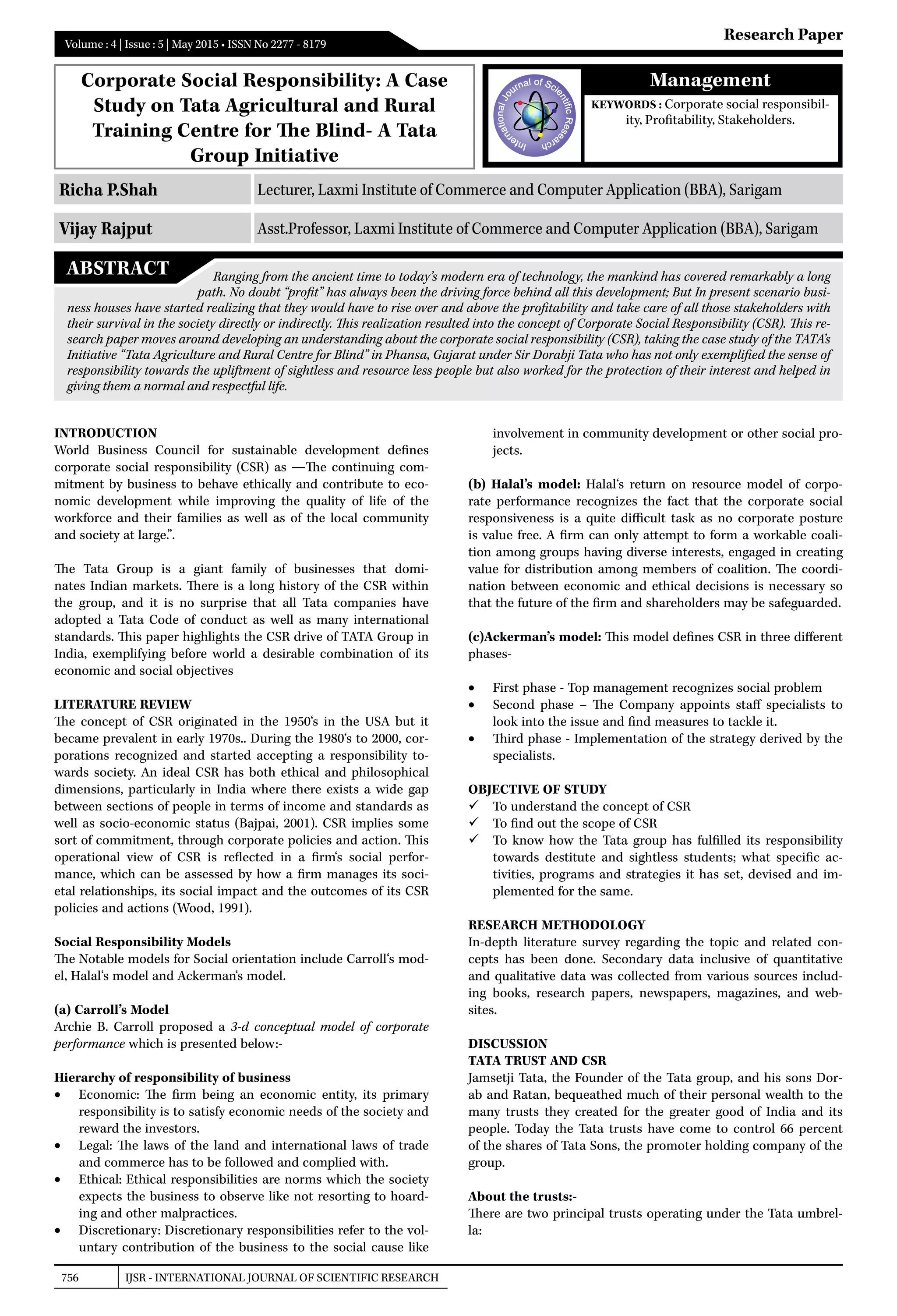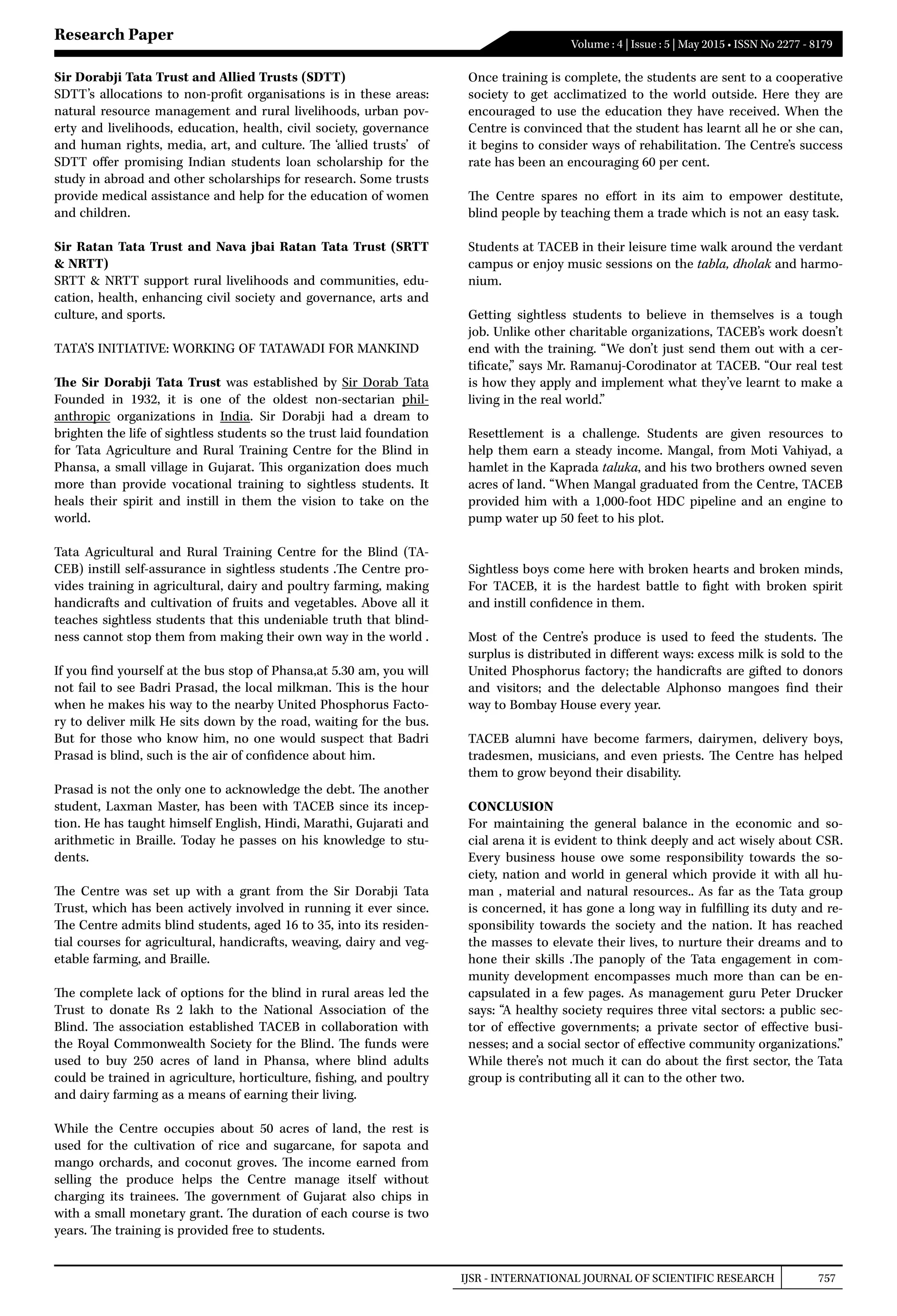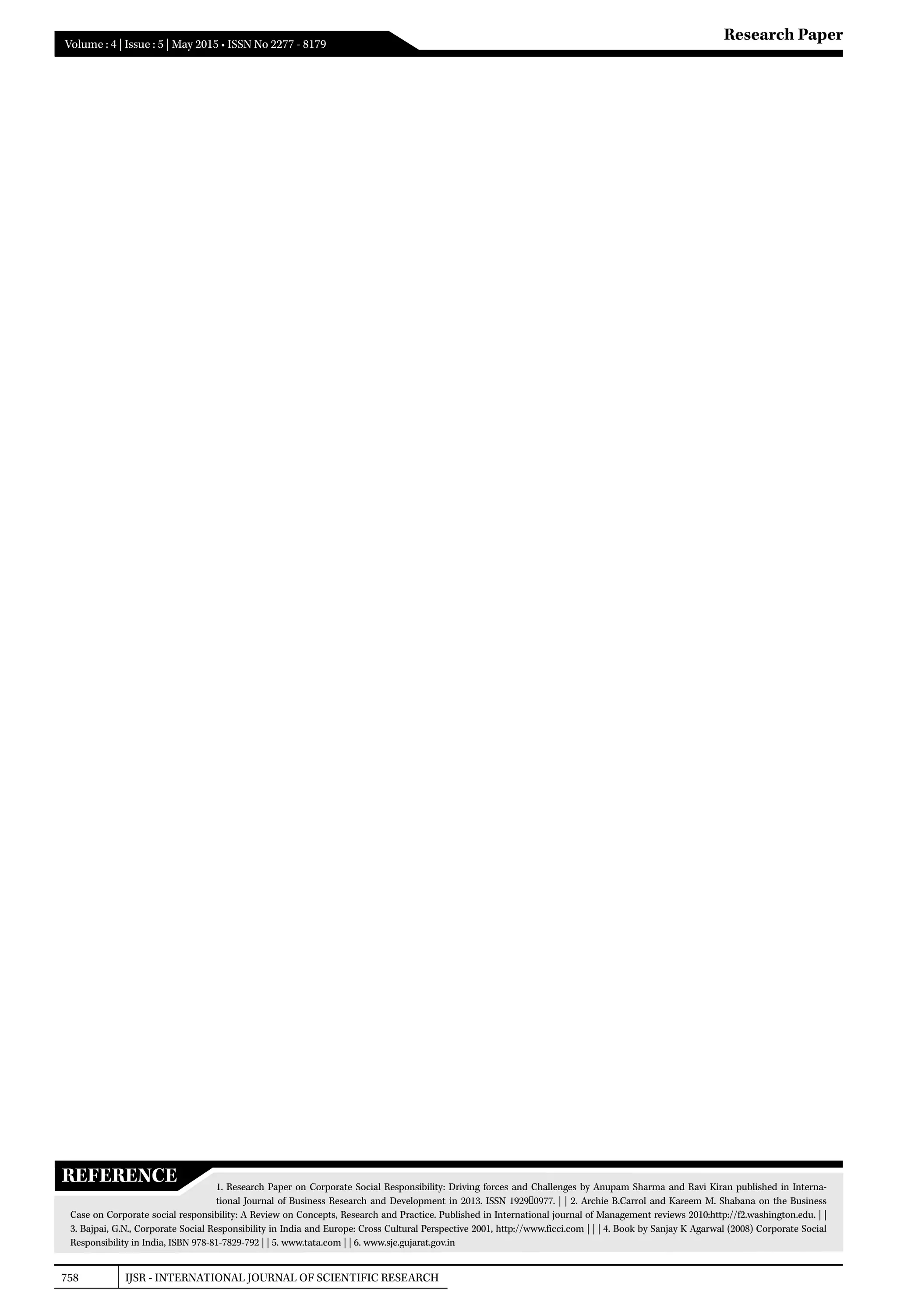This research paper discusses the corporate social responsibility (CSR) initiatives of the Tata Group, focusing on the Tata Agricultural and Rural Training Centre for the Blind in Gujarat. It highlights the importance of CSR in balancing profitability with the well-being of stakeholders and illustrates how the Tata Group has empowered blind individuals through vocational training and support. The paper concludes that businesses have a responsibility to contribute positively to society, as exemplified by the Tata Group's commitment to community development and social upliftment.


